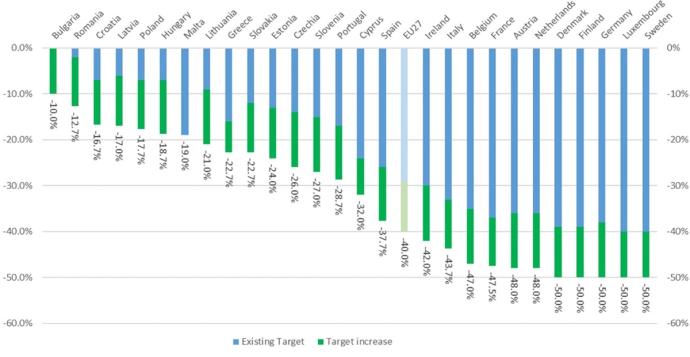Emissions reductions target for non-ETS sectors agreed
On 8 November, the Council and the European Parliament reached a provisional political agreement on the Effort Sharing Regulation as part of the Fitfor55 package, fixing a stronger emission reduction target in the building, transport, and agriculture sectors at 40% by 2030 compared to the 2005 levels.
The Effort Sharing regulation was adopted in 2018 and sets targets for EU member states to reduce emissions in the following sectors:
- Road transport
- Domestic maritime transport
- Buildings
- Agriculture
- Waste management
These sectors are not covered by the EU ETS and are currently responsible for 60% of EU greenhouse gases emissions.
The November meeting was the third trilogue between the two European institutions, as the details of the legal text were negotiated. Next, the provisional political agreement will need to be formally adopted by the Council and the Parliament, after which the regulation will be official and enter into force.
The target that is currently legally in place pending the formal adoption is at 29% emissions reduction compared to the 2005 levels. Importantly, the agreement keeps the original targets assigned to each member state tabled by the Commission (see figure below). Note, the targets are set considering different starting points and capacities of each member state so that countries with higher GDP per capita have higher emission reduction targets.

Some details:
- The emissions trajectory for each member state will be updated in 2025 meaning that emissions allocations could be adjusted for 2026 – 2030;
- Member states can ‘bank and borrow’ emissions allocations. Thus, “if their emissions were lower than their annual emission allocations, member states can bank up to 75% of their annual emission allocation for that year to subsequent years until 2030. <…> in 2022 - 2029, member states will be able to bank up to 25% of their annual emission allocations up to that year and use them in subsequent years until 2030”;
- Member states will be able to buy and sell emission allocations between themselves (up to 10% of their annual emissions allocation for the years 2021 – 2025, and 15% for 2026 – 2030);
- Limited amount of carbon credits generated by removals of greenhouse gases in the land use, land-use change, and forestry (LULUCF) sector will be available for member states use;
- ETS flexibility. Nine member states will be able to use a limited amount of ETS allowances to offset emissions in the non-ETS sectors in 2021 – 2030.
We are still expecting the publication of the provisional political agreement’s text and will provide you with an analysis as more details become available. In the meantime, should you have any questions, please contact our Renewable Policy Analyst at mary@greenfact.com.